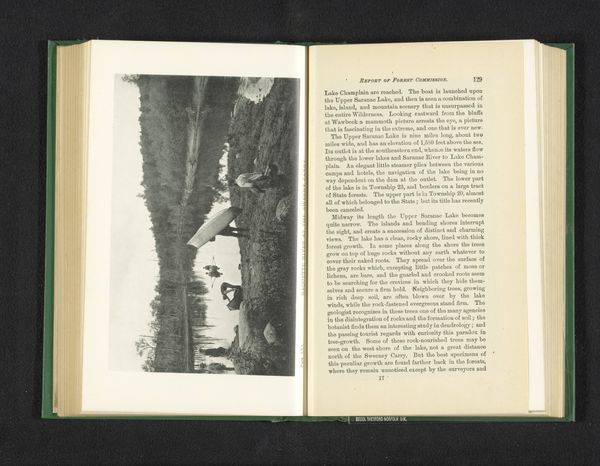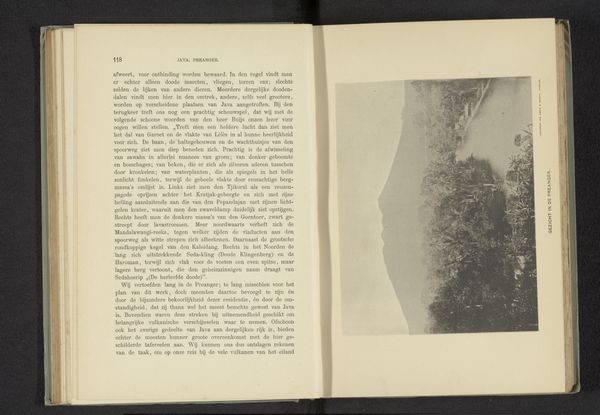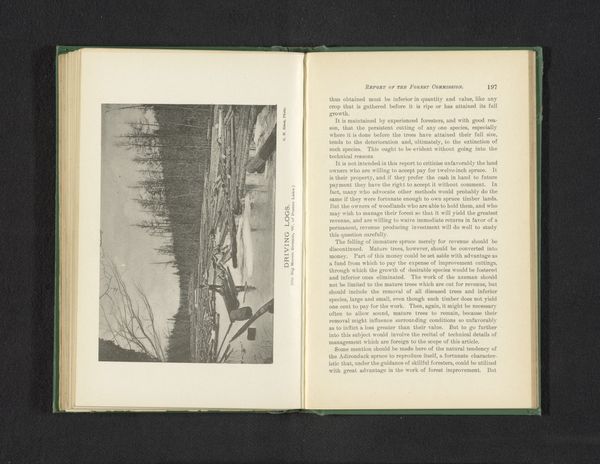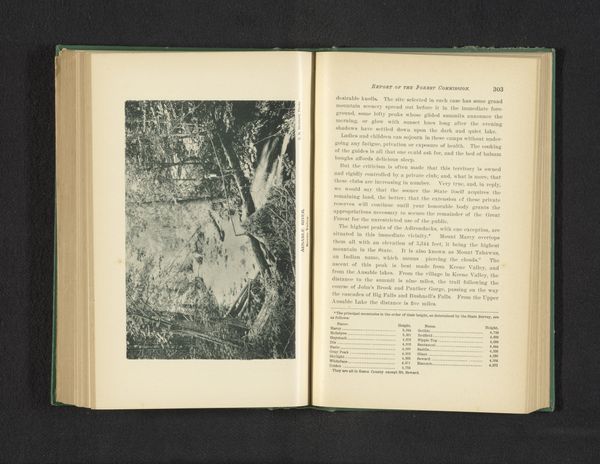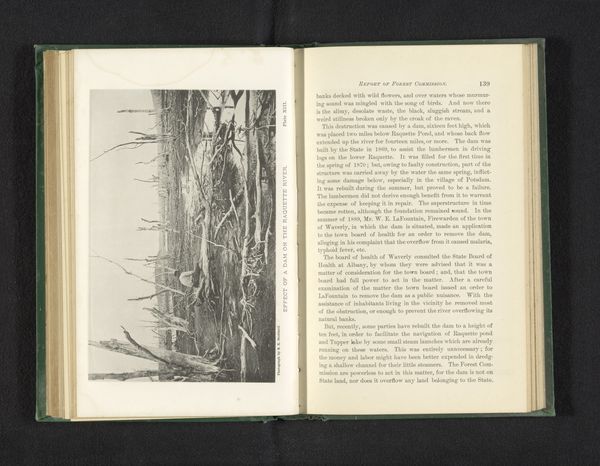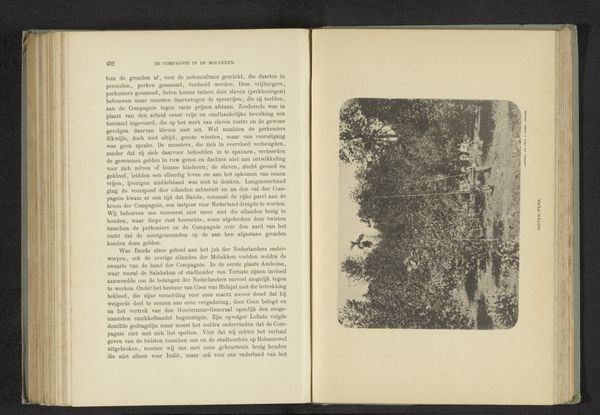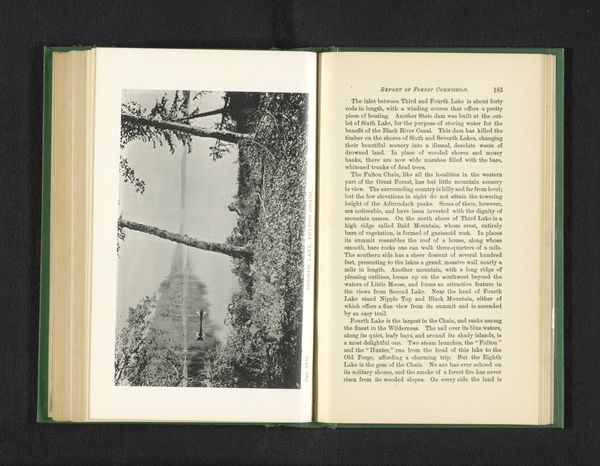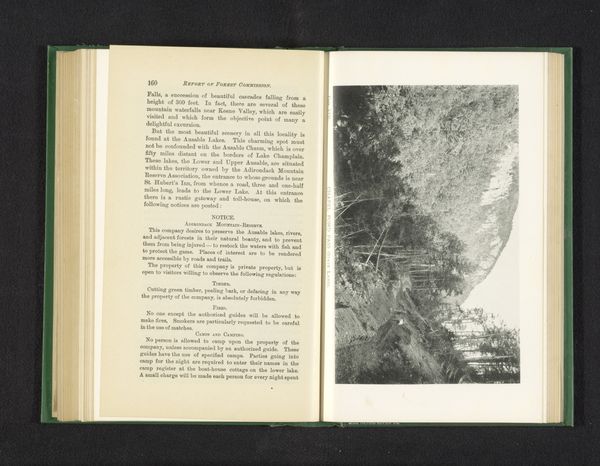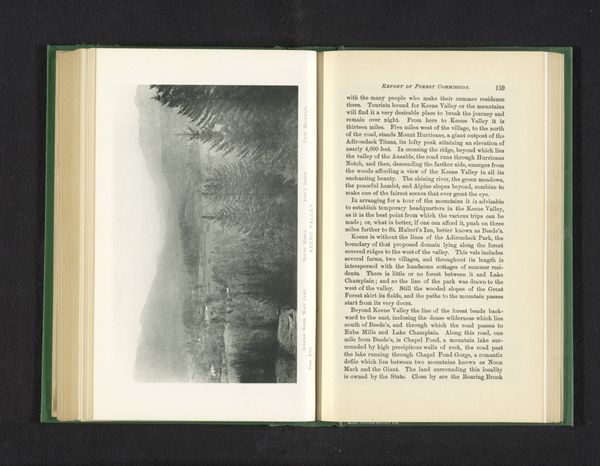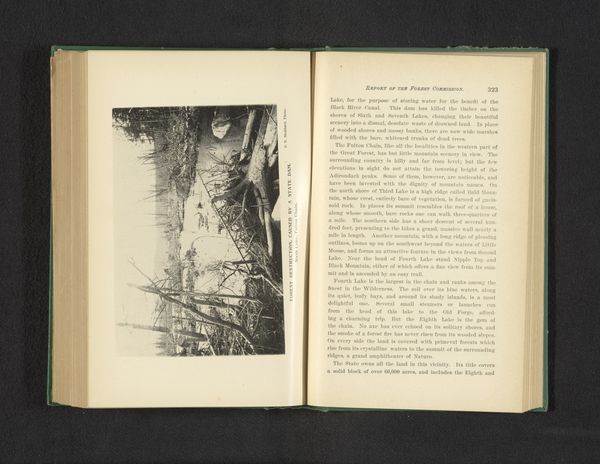
photography, gelatin-silver-print
#
landscape
#
river
#
photography
#
gelatin-silver-print
#
realism
Dimensions: height 113 mm, width 177 mm
Copyright: Rijks Museum: Open Domain
Curator: Here we have Seneca Ray Stoddard's "Raquette River," a gelatin silver print from 1891. It seems a moment captured right from the pages of history. Editor: My first impression? It's still. Profoundly still. The stillness of the water reflecting a bygone era. The figures almost blend into the landscape. I'm curious about how a photograph conveys stillness – like a captured breath. Curator: Stoddard was renowned for his landscape photography, particularly his images of the Adirondack region. In "Raquette River," we see his keen eye for composition. Look at how the river cuts diagonally, creating depth. The soft light enhances the tranquility. Editor: Yes, it’s visually serene, but I wonder about access at the time, or even the romanticization of untouched lands. Whose accessibility are we celebrating, and who is actively excluded? The image evokes ideas of Manifest Destiny, painting nature as this inviting yet “untamed” territory for the taking. How does Stoddard engage—or not engage—with that narrative? Curator: That's a crucial point. While Stoddard celebrated the beauty of the wilderness, we must acknowledge the complexities surrounding its development and use. I do appreciate the detail. The texture of the trees, the ripples on the water, the clothing, even... remarkable for a gelatin silver print. Editor: Technique aside, do you feel as if it is inviting, though? Consider the subjects; they don’t quite merge into the backdrop as much as they simply belong there. The photograph is striking precisely for how nonchalant these characters are positioned—so integrated with nature, with each other, and the river. But how did this depiction play into larger stories of settlement and exploitation of indigenous lands? Curator: Food for thought, definitely. Thinking about that quiet tension allows for richer discussions than only the art for art's sake narrative. It offers us not just a pretty picture but a gateway into difficult conversations. Editor: Absolutely. It invites a closer examination, an unearthing, maybe a destabilization of preconceived notions. Perhaps it reveals more about us as viewers, and how conditioned we have become in these portrayals.
Comments
No comments
Be the first to comment and join the conversation on the ultimate creative platform.
